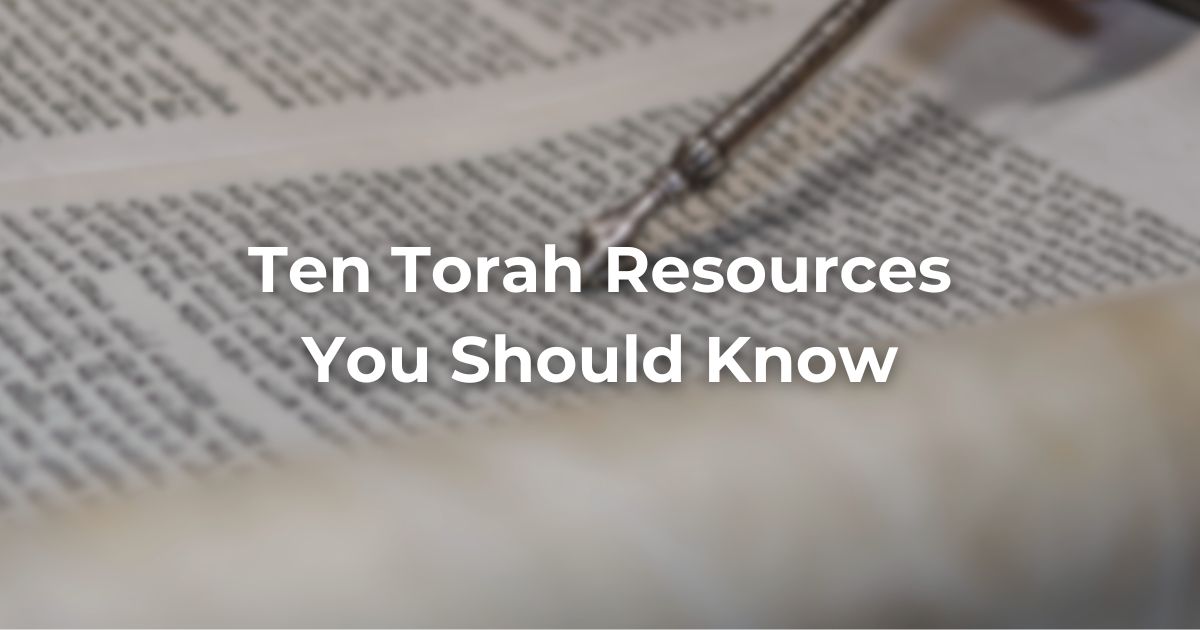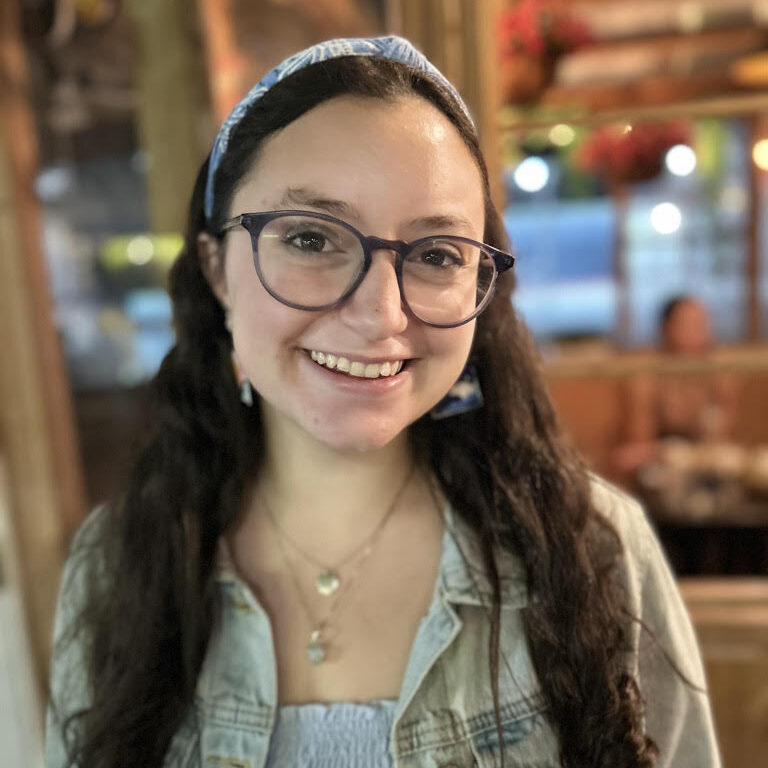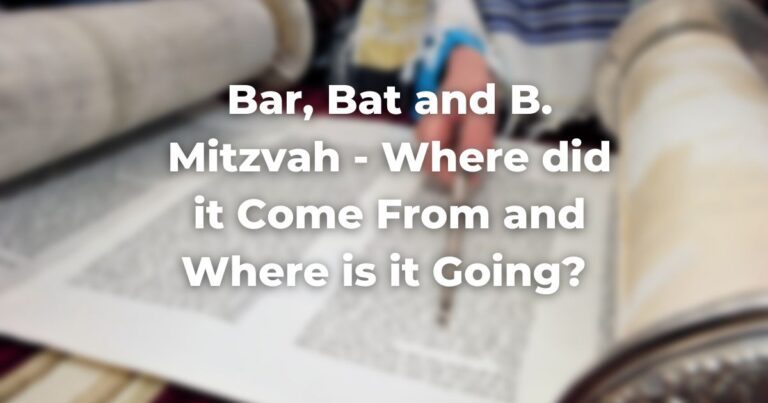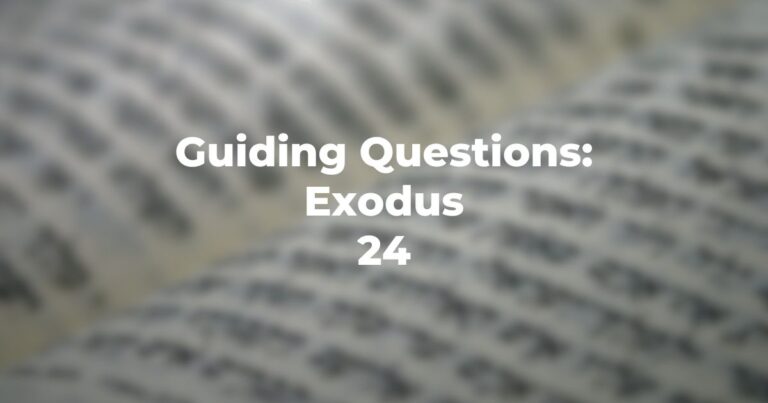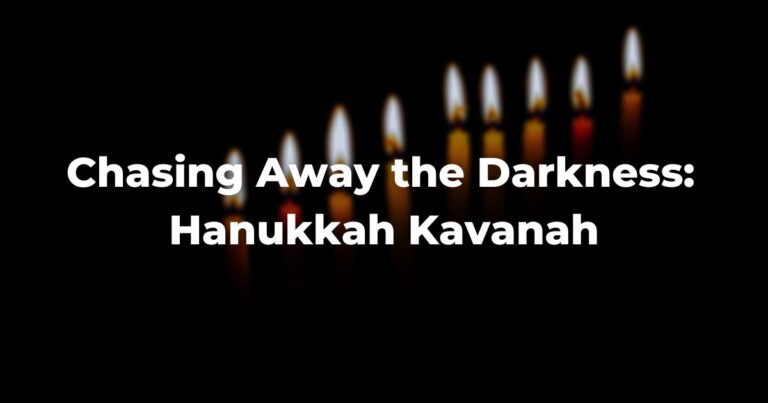The internet is vast, literally billions and billions of pages. How are we supposed to find the amazing TorahRefers to the first five books of the Hebrew Bible, the Tanakh, also called the Five Books of Moses, Pentateuch or the Hebrew equivalent, Humash. This is also called the Written Torah. The term may also refer to teachings that expound on Jewish tradition. Read more online without some help?
That’s what we’ve got for you.
Here is a curated list of resources you might not know exist to help you dig deeper into Judaism.
Libraries and Archives
1. Sefaria: A Living Library of Torah
This online library of primary Jewish sources is free to use. It includes many texts with multiple translations, like the TanakhAn acronym for the name of the Hebrew Bible: Torah, Neviim, and Ketuvim. Read more (the Hebrew Bible), TalmudReferring to one of two collections, the Jerusalem and Babylonian Talmuds, edited in the 6th century, that contains hundreds of years of commentary, discussion, and exploration of the ideas in the Mishnah. One could describe it as Mishnah + Gemara = Talmud Read more, MidrashThis word is used in two ways, as both a concept and a literature. As a concept, midrash is the expansive interpretation of biblical texts. The term is used to describe the practice of rabbinic interpretation. As a text, it refers to specific collections of interpretations, particularly from the third to ninth centuries in the Land of Israel and Babylonia. Plural: Midrashim
Read more, Halakhic (Jewish legal) texts, and Hasidic treatises. This only scratches the surface. Users can create their own source sheets, accessible to anyone.
This gathering of women’s voices, stories, and Torah is an invaluable resource. With an encyclopedia, digital exhibits, podcasts, interviews, and history, this archive has something meaningful, reflective, and informative for everyone.
Conservative/Masorti Rabbinical Schools
3. The Jewish Theological Seminary
JTS has decades’ worth of Torah commentaries, holiday explorations, podcasts, and lectures available. You can sort through them by genre, theme, series, and even by author. Beyond that, you can find classes to take and curricula to teach on their Community Learning page.
4. The Ziegler School of Rabbinic Studies
The Ziegler School’s Torah Resource Center has collected weekly and holiday commentaries for years. It also has hosted podcasts and produced the “Walking With Series” of booklets on various subjects like holidays, justice, and life cycles.
5. The Schechter Institute and Rabbinical School
The Schechter Institute houses a collection of articles, searchable by keyword, topic, and author. Because the institute is housed in Israel, the website includes a whole world of material in both Hebrew and English. Schechter covers a lot of material both in English and in Hebrew. The institute also hosts high-level Community Learning programs.
Conservative Jewish Organizations
6. Women’s League of Conservative Judaism
View a collection of articles, interviews, and documents from over a century of women’s Conservative/Masorti movement history. The collection includes documents on the Women’s League itself and addresses from leaders in the Movement.
The FJC, home of the Conservative Yeshiva, offers virtual programming alongside its online resources. Some of this content includes Torah Sparks, a Parashat Hashavua blog (some of which can be found right here on Exploring Judaism!), Daf Shevui (an alternative to Daf Yomi, the seven-year-long daily Talmud study), and Mishnah Yomit, a daily MishnahA collection of rabbinic teachings edited in Israel around 225 CE. Organized in six sedaraim by subject matter and dealing with both ritual and civil law. Both the Jerusalem and Babylonian Talmud are expansive discussions of the Mishnah. Read more email newsletter.
Masorti Olami is the organization representing Masorti Judaism in Europe, Latin America, the Former Soviet Union, Africa, Asia, and Australia. You can find Torah and perspectives from across the world on the Movement, on holidays, and in a variety of languages. (Conservative Judaism and Masorti Judaism are the same movement with different names in different places.)
For Kids
9. Devash: Hadar Institute’s weekly Parashah magazine for families and children
Devash is geared towards helping children engage deeply with text study from a young age. Each week’s magazine includes a summary of the parashah and space to look deeper into specific text (with commentaries!), questions for kids to answer with their families, and activities to keep your children engaged with profound Torah learning.
10. Bim Bam
Among other resources, Bim Bam uses digital storytelling to engage kids in Jewish learning. They put out weekly video summaries of the Torah portion and “Judaism 101” resources, including videos on holidays, values and beliefs, prayers and blessings, and even life cycle events.
A Bonus!
Whether you came to this list of resources from Exploring Judaism’s homepage or it popped up on your Google search, we’re happy to have you! EJ is the digital home for Conservative/Masorti Judaism, learning, studying, and celebrating from Conservative perspective. Here, you can find How-Tos for the simplest of Jewish questions and other sources that dive deeper than ever. Our Facebook has memes in-store, just for you!
Author
-

Reena Bromberg Gaber is a student in the Joint Program with Columbia University and the Jewish Theological Seminary. At school, she is involved with Columbia/Barnard Hillel, Gamma Phi Beta, the Columbia Daily Spectator, and Artists Reaching Out. Growing up, Reena was involved with the Conservative movement, including many summers as a camper and staff member at Camp Ramah in the Poconos and in local, regional, and international leadership positions in USY. As Reena moves through college and into adulthood, she is excited to find a space for herself and her peers in the Conservative movement.
View all posts

